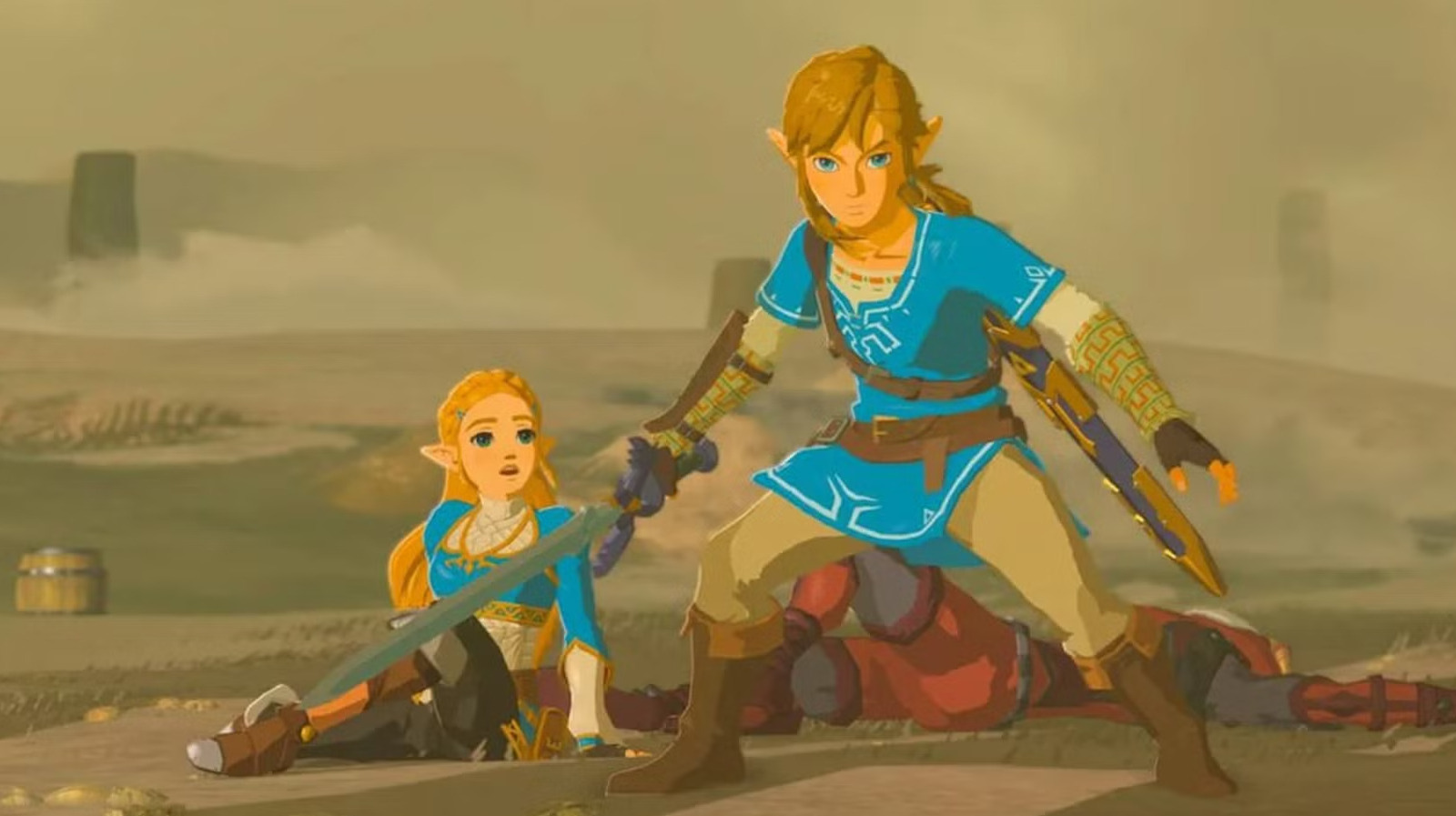
by admin | Jul 16, 2025 | TV & Beyond Articles
getting Jim Carrey to postpone his retirement from acting), or, most recently, the box office juggernaut that was “A Minecraft Movie.”
Now, it’s time for one of the most celebrated video game franchises of all time to make its big-screen debut: “The Legend of Zelda.” Director Wes Ball (best known for the “Maze Runner” trilogy and “Kingdom of the Planet of the Apes”) has been tapped to direct the first live-action adaptation of the video game created by Shigeru Miyamoto and Takashi Tezuka. Ball has previously stated that his desire is to make a movie that feels like “live-action Miyazaki” which is an incredibly high bar to clear.
With a director already in place, “Legend of Zelda” has now taken the next logical step forward and cast its leads. Indeed, Miyamoto himself took to social media to announce who will play both Zelda and Link (who, remember, are entirely different people!).
“I am pleased to announce that for the live-action film of ‘The Legend of Zelda,’ Zelda will be played by Bo Bragason-san, and Link by Benjamin Evan Ainsworth-san,” Miyamoto stated via the official Nintendo X (formerly Twitter) account. “I am very much looking forward to seeing both of them on the big-screen.”
Granted, this is a major surprise for everyone who was expecting the film to go the “Super Mario Bros. Movie” route and cast huge stars in its lead roles. In fact, “Euphoria” star Hunter Schafer was a decidedly popular fancast for the role of Princess Zelda, while a fancast from Hell a more ill-advised fan campaign had been trying to get the movie’s casting directors to recruit Tom Holland as Link.
Legend of Zelda will feature newcomers as Link and Zelda (which makes sense)
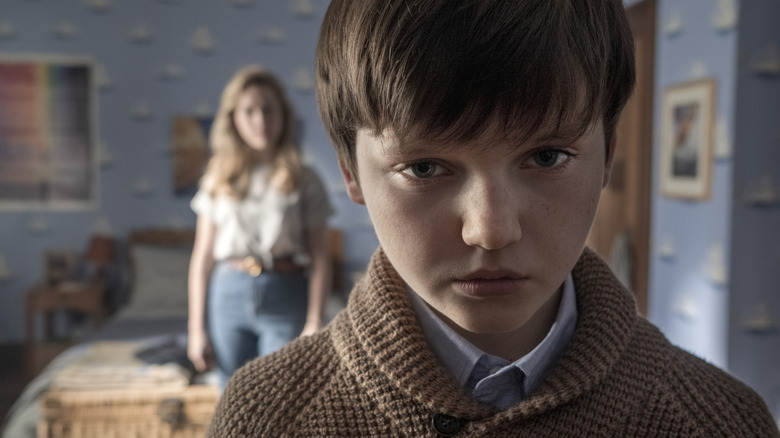
Netflix
Admittedly, it’s pretty disappointing that Schafer wasn’t cast as Zelda, primarily because few actors have that ethereal, otherworldly look that Schafer brings to her roles — one that is both approachable yet quirky and fantastical. (Just look at her brief but memorable appearance as Tigris in “The Hunger Games: The Ballad of Songbirds & Snakes.”)
Still, it makes sense to go with young newcomers here. For one, hiring younger actors will allow the production to account for potential sequels in the event the movie does well — and truly, we desperately need more fantasy franchises on the big screen. Though “The Legend of Zelda” is supposedly coming out in just two years and Schafer is only 26, it’s easy to understand why the film’s producers wouldn’t be super excited about the idea of potentially having a movie trilogy where Princess Zelda is in her mid-30s by the final film. (Not to mention, rumor has it Schafer is currently up for a major role in Marvel Studios’ “X-Men” reboot.) Sure, an Old Man Link movie could definitely work, but Zelda and Link tend to always look like teenagers or, at the most, people in their early 20s in the “Legend of Zelda” games (even the ones that span a long passage of time).
As such, relatively little-known actors it is. Bo Bragason, as it were, is best known for the BBC One show “Three Girls” and the Disney+ series “Renegade Nell.” Meanwhile, Benjamin Evan Ainsworth voiced Pinocchio in Robert Zemeckis’ cursed live-action “Pinocchio,” in addition to playing Miles in Mike Flanagan’s “The Haunting of Bly Manor.” Granted, Ainsworth already played a silent, stoic character in that show, though he was definitely more of a possessed evil child than a noble warrior in it.
“The Legend of Zelda” is set to hit theaters on May 7, 2027, having been delayed from its initial March 2027 date for “production reasons” (as Nintendo stated at the time).
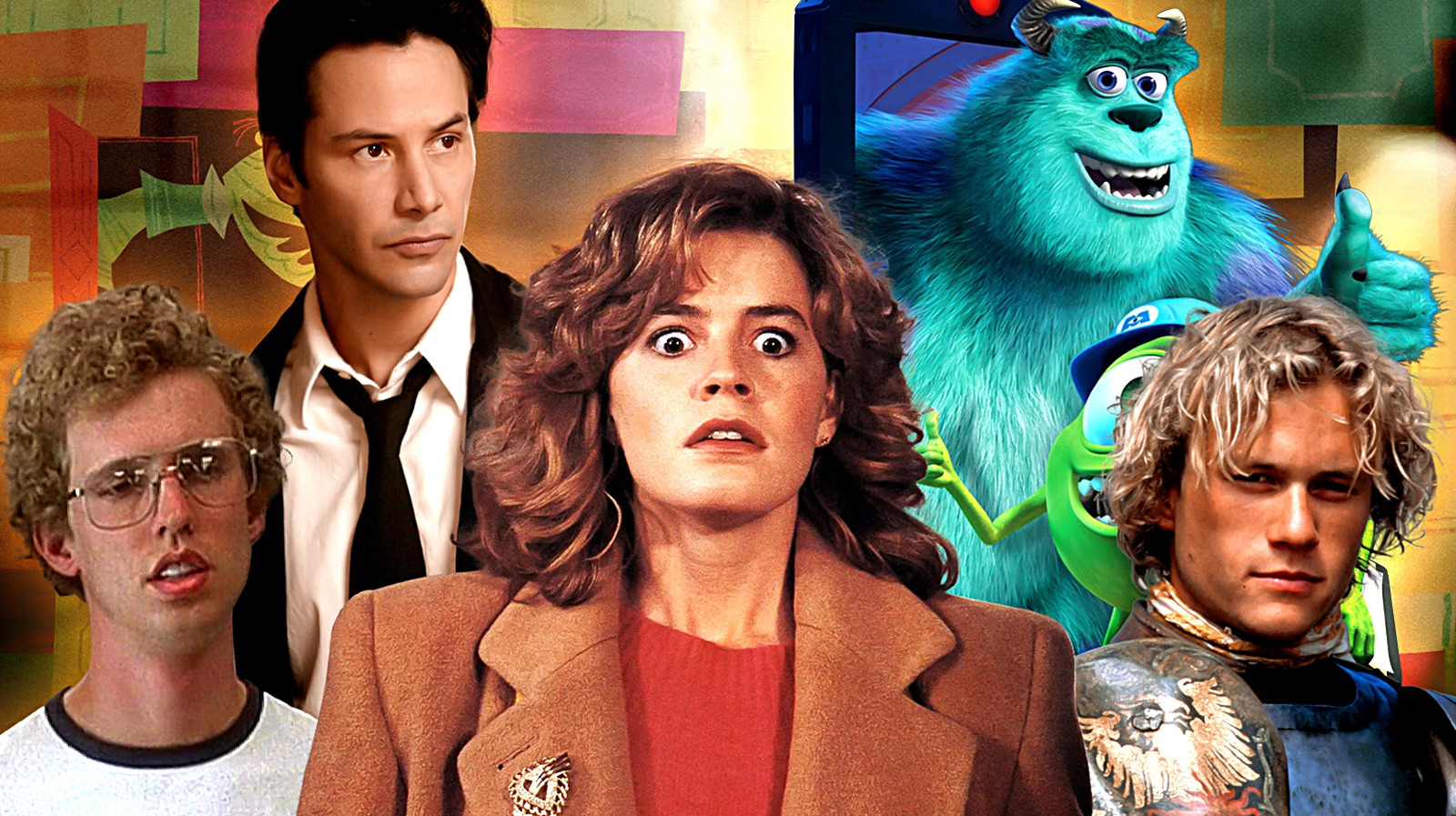
by admin | Jul 16, 2025 | TV & Beyond Articles
at the behest of director Edgar Wright — shifted the pop culture landscape and all but ensured audiences would start sitting through lengthy end titles just to catch a few seconds teasing the next big adventure. The trend continues to this day, and it’s almost disappointing when a movie, especially a big blockbuster, doesn’t feature something at the very end.
So, well done, Marvel, for kick-starting the post-credit scene trend.
Except… they didn’t.
As much as the MCU deserves credit for fully capitalizing on the gimmick, the post-credit scene — also known as a stinger, end tag, or credit cookie — existed long before Tony Stark met Nick Fury. While some are incredibly famous, like “Ferris Bueller’s Day Off” bringing back Ferris to encourage the audience to leave the theater, others have flown under the radar for years, even decades.
Here are 15 movies with post-credit scenes you probably missed!
Airplane! (1980)

Paramount Pictures
First up is “Airplane!”, the 1980 classic that pokes fun at all those melodramatic disaster epics of the 1970s. Directed by Jim Abrahams and David and Jerry Zucker, this hilarious farce starring Robert Hays, Julie Hagerty, and Leslie Nielsen follows the chaos aboard a flight from Los Angeles to Chicago after many passengers — including the crew — suffer food poisoning. A former pilot (Hays) and his ex-lover (Hagerty) are forced to step in and land the plane safely. Don’t worry, it’s still incredibly hilarious 40 years later.
The hilarity continues after the credits with a quick scene that pays off a gag set up in the film’s opening moments. Our hero, Ted Striker, makes his introduction by parking his taxi on a curb near the airport entrance, exiting just as a passenger enters the vehicle. “I’ll be back in a minute,” Ted says, flipping on the taximeter before bolting inside. Hilariously, we return to this beat after the events of the film and see the hapless passenger still waiting patiently. “Well,” he says, checking his watch, “I’ll give him another 20 minutes, but that’s it.”
The gag works on its own, but compounding the comedy further is the fact that the passenger is none other than real-life politician Howard Jarvis, known for his fiscally conservative politics. Oh, the irony.
Young Sherlock Holmes (1985)
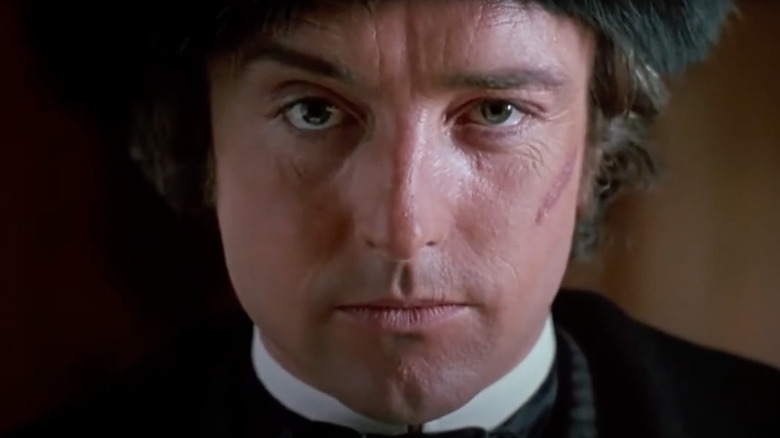
Paramount Pictures
How many people were clamoring for a “Young Sherlock Holmes” movie in the mid-1980s? As it turns out, not that many — at least in the United States, where the ambitious Barry Levinson production earned a meager $19.7 million. Despite boasting the first fully computer-generated character integrated into live-action in a motion picture, audiences turned up their noses and all but nixed hopes of a potential sequel.
Too bad, because the post-credits stinger sets up Anthony Wiggins’ return as the villainous Rathe after he seemingly falls to his death during the final battle. Moreover, he now goes by Moriarty, a name fans of Sherlock Holmes will instantly recognize as the iconic detective’s greatest nemesis.
Fans can only imagine what might have been — or they can tune into Guy Ritchie’s upcoming “Young Sherlock Holmes” Amazon Prime TV series. No, it’s not a direct continuation of the film, but it will likely borrow some ideas and, at the very least, present a more complete iteration of the cult classic.
Adventures in Babysitting (1986)
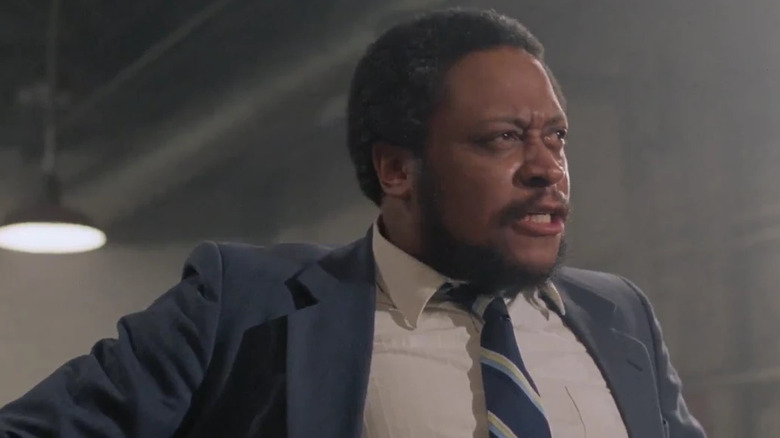
Touchstone Pictures
A 1980s staple, “Adventures in Babysitting” sees Elisabeth Shue’s Chris settle in to watch a trio of kids for the night: the cool-headed Brad (Keith Coogan), the incredibly horny Daryl (Anthony Rapp), and Thor’s biggest fan, Sara (Maia Brewton). When Chris’ friend Brenda (Penelope Ann Miller) gets stranded at a bus station after a failed attempt at running away, our beleaguered babysitter must break all the rules and embark on a chaotic quest to save the day.
The climax sees our precocious crew chased through a high-rise by a group of criminals desperate to recover a “Playboy” magazine containing important notes. Sara winds up dangling from a window on the outside of the building, pursued by a man named Graydon (Ron Canada). Luckily, the plucky kid escapes, and we’re left to assume her attacker fell to his death, as he’s never seen again.
As it turns out, Graydon does appear after the credits, clinging to the side of the building with a panicked expression on his face. It’s a brief but funny conclusion to a wild adventure.
Masters of the Universe (1987)
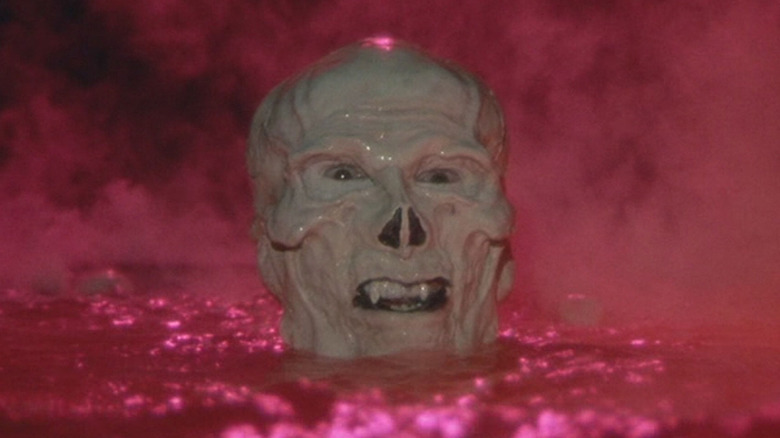
Cannon Films
Some of you may already be familiar with this topic, but we’ll touch on it just in case. After all, if you loved 1987’s “Masters of the Universe” — the first big-screen adaptation of the popular “He-Man: Masters of the Universe” cartoon series — then you’ve probably cried out to the powers of Grayskull for more footage.
As is the case with many films on this list, the producers of “Masters of the Universe” tacked on a post-credits scene teasing a potential sequel (securing a place on our list of amazing ’80s movies that deserved a followup). In this case, Skeletor (Frank Langella), who had seemingly fallen to his doom after He-Man (Dolph Lundgren) knocked him into a pit, reemerges from a pool of water and declares, “I’ll be back.” Clearly, the fleshless villain hadn’t seen the film’s dismal box office returns.
In an alternate reality, “Masters of the Universe” becomes a box office smash, everyone returns for the sequel, and Courteney Cox reprises her role, thereby missing out on a little show called “Friends.” Now that’s a big What If?
Planes, Trains and Automobiles (1987)
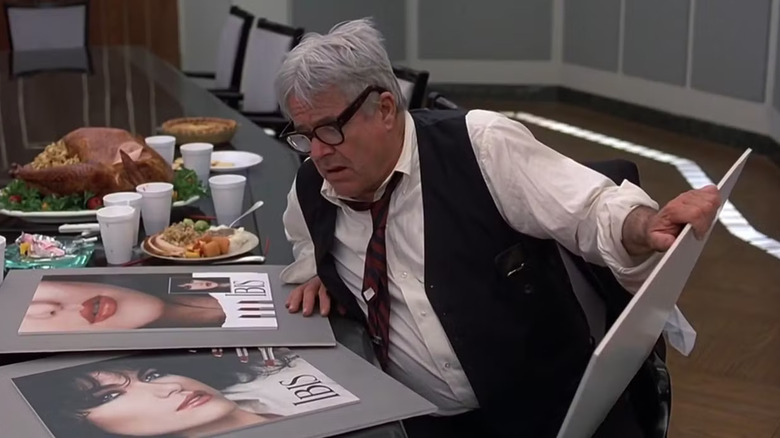
Paramount Pictures
Another brief but memorable gag occurs after the credits in John Hughes’ “Planes, Trains and Automobiles,” one of the famed director’s best movies.
This 1987 comedy follows the exploits of an advertising executive named Neal Page (Steve Martin) as he attempts to get home to his family for Thanksgiving. Unfortunately, that requires the poor guy teaming up with Del Griffith (John Candy), a kindhearted but buffoonish salesman with a knack for overcomplicating an already chaotic situation. Eventually, the duo learn to work together and arrive in Chicago safe and sound — though decidedly with a lot less money.
The whole fiasco kicks off thanks to Neal’s boneheaded boss (George Petrie), who spends far too long silently staring at various ad campaign layouts without ever arriving at a decision. Following an incredibly awkward meeting that drags on longer than it should, Neal bolts out the door to commence his long, arduous journey. Meanwhile, a witty post-credit scene shows his boss still sitting at the table, still staring at the ads, seemingly just as undecided days later.
The Great Outdoors (1988)
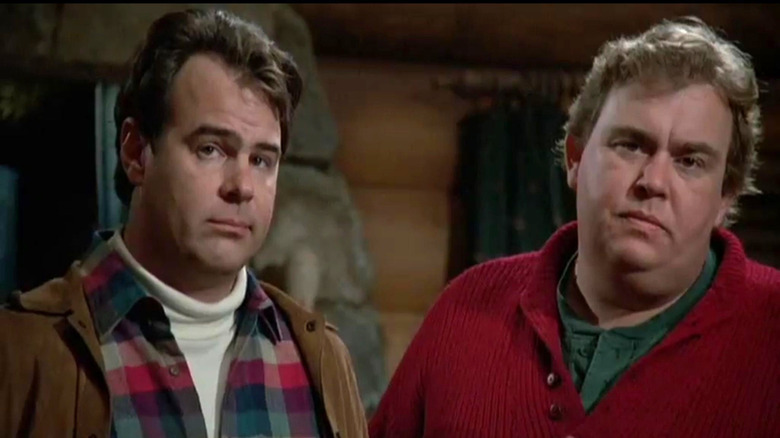
Universal Pictures
Yes, 1988’s “The Great Outdoors” features a post-credits scene that picks up on an earlier gag involving the ravenous, bald-headed bear — nicknamed “Jody” — who terrorizes the main characters and ends up with a hairless butt after being shot with a shotgun.
After checking in with Chet (John Candy), Connie (Stephanie Faracy), Roman (Dan Aykroyd), Kate (Annette Bening), and Wally (Robert Prosky), who are energetically dancing to “Land of a Thousand Dances” in a lively bar, the film cuts to the raccoon family seen earlier in the movie. Their dialogue is once again presented via subtitles. Rather than discussing trash this time, the raccoons comment on Jody’s misfortune, noting she’s “sitting in the lake” after getting “shot in the a**!” One quips, “She’s bald on both ends now!”
It’s a goofy capper that echoes the film’s brand of slapstick humor and reassures the audience that the bear survived. Honestly, the joke is par for the course in this fun, if ultimately half-hearted, effort from director Howard Deutch.
Lethal Weapon 3 (1992)
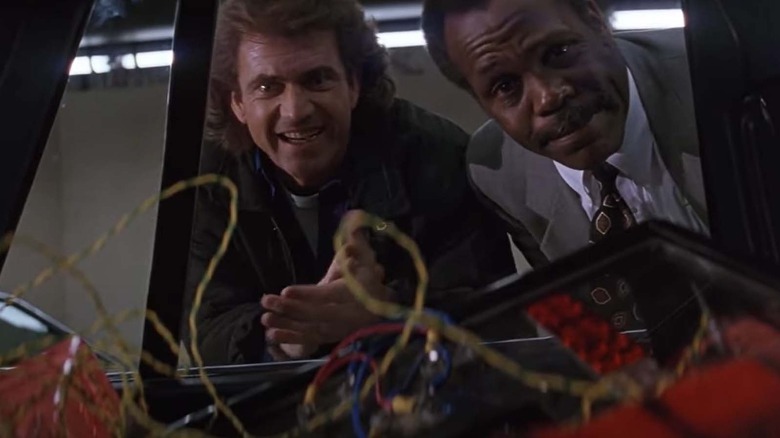
Warner Bros.
In 1992, Mel Gibson, Danny Glover, and Richard Donner re-teamed for “Lethal Weapon 3,” the third entry in the popular buddy-cop series. This time, our heroes Martin Riggs (Gibson) and Roger Murtaugh (Glover) must take down a former cop (Stuart Wilson) who spends his days smuggling contraband guns.
The threequel leans more on comedy than action, placing it on the lower end of Donner’s filmography, but “Lethal Weapon 3” still delivers a plethora of laughs and thrills. Notably, an opening sequence in which Riggs and Murtaugh muck up a car bomb situation and destroy an LA high rise.
Donner repeats this gag in a fun post-credit sequence that sees our boys pull up to another bomb-laden building. This time, however, the device detonates before they even have time to get out of the car, causing Riggs and Murtaugh to drive away panic-stricken. It should be noted that neither Gibson nor Glover appear in the scene, but they supply a hefty bit of improv over the soundtrack that’s worth a listen.
Super Mario Bros. (1993)
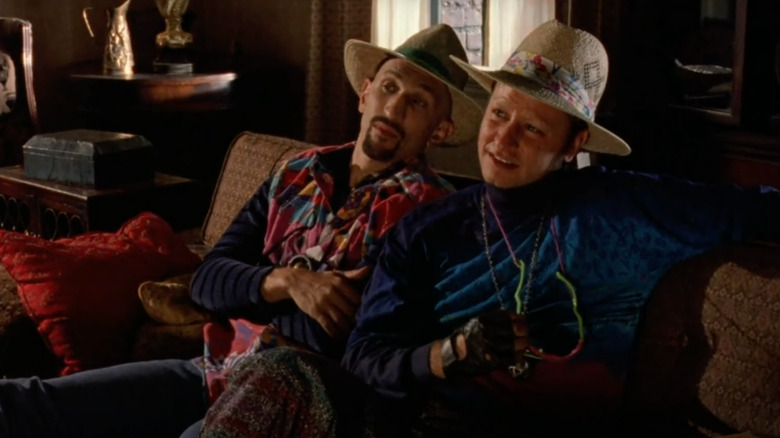
Hollywood Pictures
Who can forget the travesty that is “Super Mario Bros.,” the 1993 big-screen adaptation of Nintendo’s video game that crashed and burned at the box office? Starring Bob Hoskins and John Leguizamo as the famed New York plumbers, this middling adventure that our own Russell Murray ranked amongst the worst video game adaptations of all time, sees our pair of heroes dropped into a parallel dimension where they encounter dinosaurs, race to save Daisy (Samantha Mathis) from the hideous President “King” Koopa (Hopper), and deal with enough ravenous fungus to make the cast of “The Last of Us” jealous.
Everyone behind the project assumed people would dig it. So much so that they included a tease in which Daisy arrives to whisk our boys away on another mission. If that weren’t enough, the filmmakers even included a tag where a pair of Japanese businessmen propose a video game based on the film’s events to… Iggy (Fisher Stevens) and Spike (Richard Edson), King Koopa’s traitorous cousins.
“What should we call it?” the businessmen ask. “How about ‘The Koopa Cousins?'” the pair retorts. Oof.
Street Fighter (1994)

Universal Pictures
Only the ’90s could deliver something as delightfully cheesy as 1994’s “Street Fighter.” Jean-Claude Van Damme stars as Colonel Guile, taking on Raul Julia’s gloriously hammy General M. Bison in a loose but colorful adaptation of the Capcom game. It’s goofy, over-the-top fun that delivers enough action, familiar faces, and even a young Kylie Minogue to satisfy its target audience.
Oddly, despite earning a nice chunk of change at the box office, “Street Fighter” never received a direct sequel. Meaning, the incredibly cool post-credit tease hinting that Bison may have survived his encounter with Guile was all for naught. Truly, there wasn’t a youngster alive in those days who didn’t dream of another matchup between the pair — even if it meant recasting Bison after Raul Julia’s death.
“Street Fighter” marked the final performance from the acclaimed actor, which is either really sad or really cool, depending on who you ask.
Heavyweights (1994)
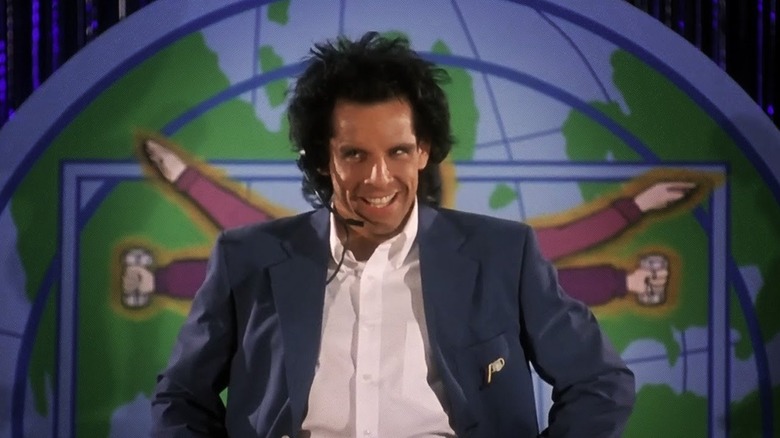
Walt Disney Pictures
“Heavyweights” is a goofy ’90s comedy about kids at a fat camp who rebel against Ben Stiller’s deranged fitness guru. There’s junk food, revenge, and enough life lessons to help explain how it went from flop to beloved ’90s classic.
Still, while this early Judd Apatow project contains plenty of laughs from its young stars — including Kenan Thompson and Paul Feig — Stiller runs away with the production. Ostensibly playing an early variation of his equally maniacal White Goodman in “Dodgeball: A True Underdog Story,” the actor upstages everyone; his energetic performance dominates at every turn.
It’s no surprise, then, that director Steven Brill opted to conclude the picture on one final humorous beat with Stiller’s character. You have to wait through the end credits to see the additional bit, which shows Tony going door-to-door unsuccessfully trying to sell healing crystals. His sales pitch carries the same bombastic tone as his fitness classes, and it’s little wonder that the client quickly slams the door in his face.
Jingle All the Way (1996)

20th Century Fox
After “True Lies,” Arnold Schwarzenegger hit a rough patch, landing in goofy fare like 1996’s “Jingle All the Way.” He plays a workaholic dad racing to find a Turbo Man doll action figure for his son Jamie (Jake Lloyd) on Christmas Eve, only to battle Sinbad’s unhinged mailman for the last one in town. It’s harmless entertainment that occasionally tickles the funny bone but is too awash in slapstick to rise above its paper-thin concept.
Regardless, everyone involved clearly thought they had another “Home Alone” on their hands and tacked on a post-credit scene just in case audiences wanted more from this broad selection of characters. Remarkably, this extra footage provides the best gag of the entire film.
We see an exhausted Arnold decorating the Christmas tree with his wife (Rita Wilson), who beams over his devotion to their son and says, “Everything that you went through today for Jamie really shows how much you love him. And if you’re willing to go through all of that for him just for a present, well, that makes me wonder. What did you get me?” Our beleaguered father/husband gapes at the camera, realizing that in all the holiday commotion, he had failed to buy her a gift. Ah, if only the rest of the film were as clever.
Monsters Inc. (2001)
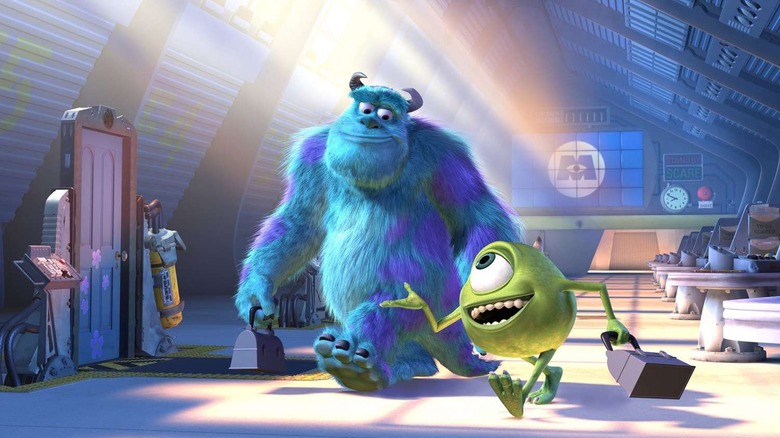
Pixar Animation Studios
Pixar delivered a handful of fun post-credit gags for audiences to enjoy. “A Bug’s Life” and “Toy Story 2” famously included gag reels, featuring the films’ characters messing up their lines or accidentally ruining scenes. “Monsters, Inc.” ditched the outtakes (at least, initially) in favor of something far grander. Patient viewers willing to endure the lengthy credits are rewarded with a two-minute short film that plays on an early joke.
Early in the film, you see, Mike Wazowski (Billy Crystal) and Sulley (John Goodman) are debating what to do with Boo (Mary Gibbs), the two-year-old girl who wandered into the Monsters universe. An argument ensues with Mike yelling, “Put that thing back where it came from or so help me…” His voice trails off as he realizes the other monsters in the facility are watching them curiously. Attempting to cover up their outburst, Mike conjures up a fib: that he and Sulley are rehearsing a play.
Fast-forward to the end, and we see the culmination of that lie, as Sulley introduces an actual play detailing the film’s events, albeit in a melodramatic manner. There are songs, tears, more laughs, and an appearance from Mike’s mom — you gotta love it!
A Knight’s Tale (2001)
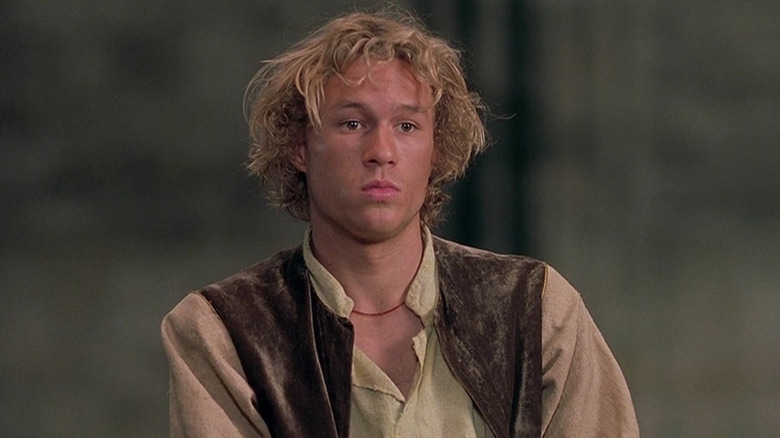
Columbia Pictures
“A Knight’s Tale” is one of those rewatchable flicks that seems to get better with each viewing. A medieval tale cheerfully adorned in early 2000s pop culture, this enjoyable farce stars Heath Ledger as a peasant squire named William Thatcher, who enters a jousting tournament by posing as a knight. Determined to “change his stars,” William, aided by his friends Roland (Mark Addy), Wat (Alan Tudyk), Kate (Laura Fraser) and Chaucer (Paul Bettany), adopts Sir Ulrich von Liechtenstein as his new name and rises through the jousting ranks, falling for noblewoman Jocelyn Shannyn Sossamon) along the way. Will our hero win the tournament, earn Jocelyn’s heart, and vanquish the dreaded Count Adhemar of Anjou (Rufus Sewell), all amidst a rocking contemporary soundtrack?
A minor classic, “A Knight’s Tale” makes the most of its young cast, including a post-credit scene in which his friends Roland, Wat, Chaucer, and Kate engage in a farting contest while sitting in an attic. The bit is nothing to write home about, but succinctly sums up the essence of Brian Helgeland’s picture. Too bad we never got a sequel to this charming adventure.
Napoleon Dynamite (2004)
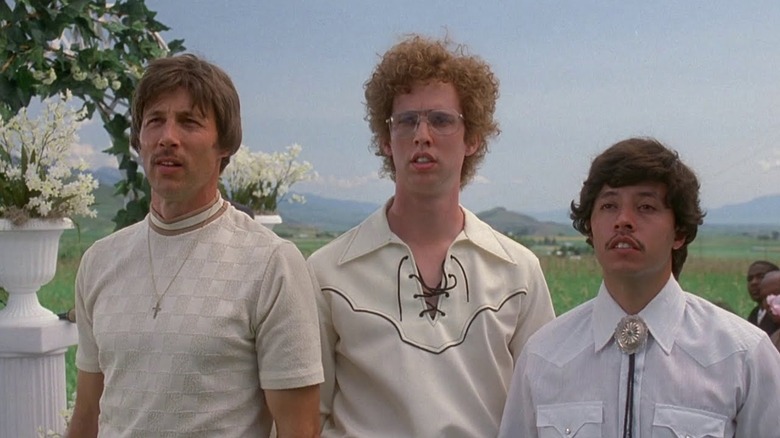
Fox Searchlight Pictures
We pity those who were too young (or old) to experience the “Napoleon Dynamite” phenomenon. This low-budget and incredibly quirky 2004 comedy from Jared Hess (director of “The Minecraft Movie,” believe it or not) appeared out of the blue and immediately cemented its place in the annals of pop culture, leading to everything from Halloween costumes to a truly atrocious animated series.
The plot — such as it is — concerns a high schooler named Napoleon (Jon Heder) and the various exploits he engages in with his buddy Pedro (Efren Ramirez), brother Kip (Aaron Ruell), and Uncle Rico (Jon Gries). Uh, and hilarity ensues. Awkward, weird hilarity. And that’s probably the best way to describe it.
Running a brisk 95 minutes, this $400,000 production keeps the fun going even after the credits roll. In fact, the additional sequence in which Kip marries his girlfriend LaFawnduh (Shondrella Avery) is one of the most expensive scenes in the movie. Audiences were all too happy to stay through the credits to experience a few additional moments with this bizarre cast of characters. Indeed, the sight of Napoleon riding to the event atop a white horse is worth the price of admission alone.
Constantine (2005)
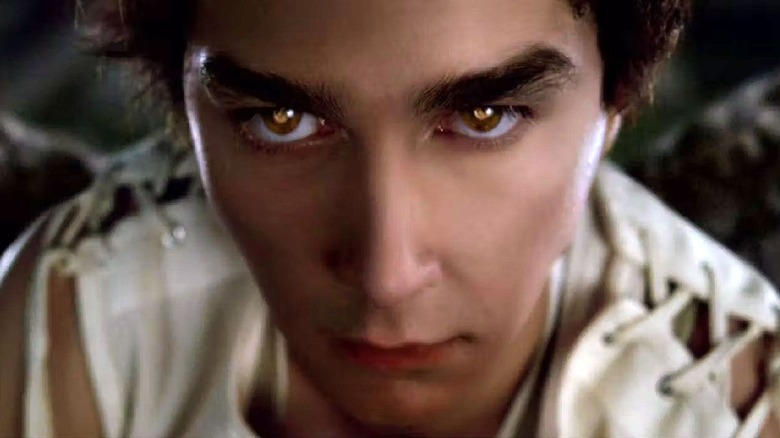
Warner Bros.
Finally, we reach 2005’s “Constantine,” a kick-ass comic book flick starring Keanu Reeves as the titular John Constantine, a chain-smoking exorcist battling demons in Los Angeles. Our hero, you see, hopes to secure a place in Heaven by doing good deeds following a life of selfish behavior. His journey places him directly in the center of a war between Heaven and Hell, featuring fallen angels, Satan (played by the terrific Peter Stormare), and a blink-and-you’ll-miss-it cameo from Michelle Monaghan.
Aiding John in his quest are grieving LAPD detective Angela Dodson (Rachel Weisz) and Chas Kramer (Shia LaBeouf), a young upstart hoping to learn all he can from his mentor. Nothing goes according to plan, however, leaving our heroes struggling to prevent Gabriel (Tilda Swinton) from unleashing Hell on Earth. Sadly, Chas dies during the final battle, leaving John mourning his loss.
Still, we wanted more of the kid, and thankfully, director Francis Lawrence obliges with a lengthy post-credit stinger. Here, our beleaguered hero visits Chas’ grave to bid farewell to his fallen comrade. Then, he turns around and begins walking away. Suddenly, a pair of wings appears behind him, and John turns to see an angelic Chas crouched atop the tombstone. The kid smiles and then zips into the sky — likely teasing a sequel that unfortunately never came to fruition. At least, not yet.
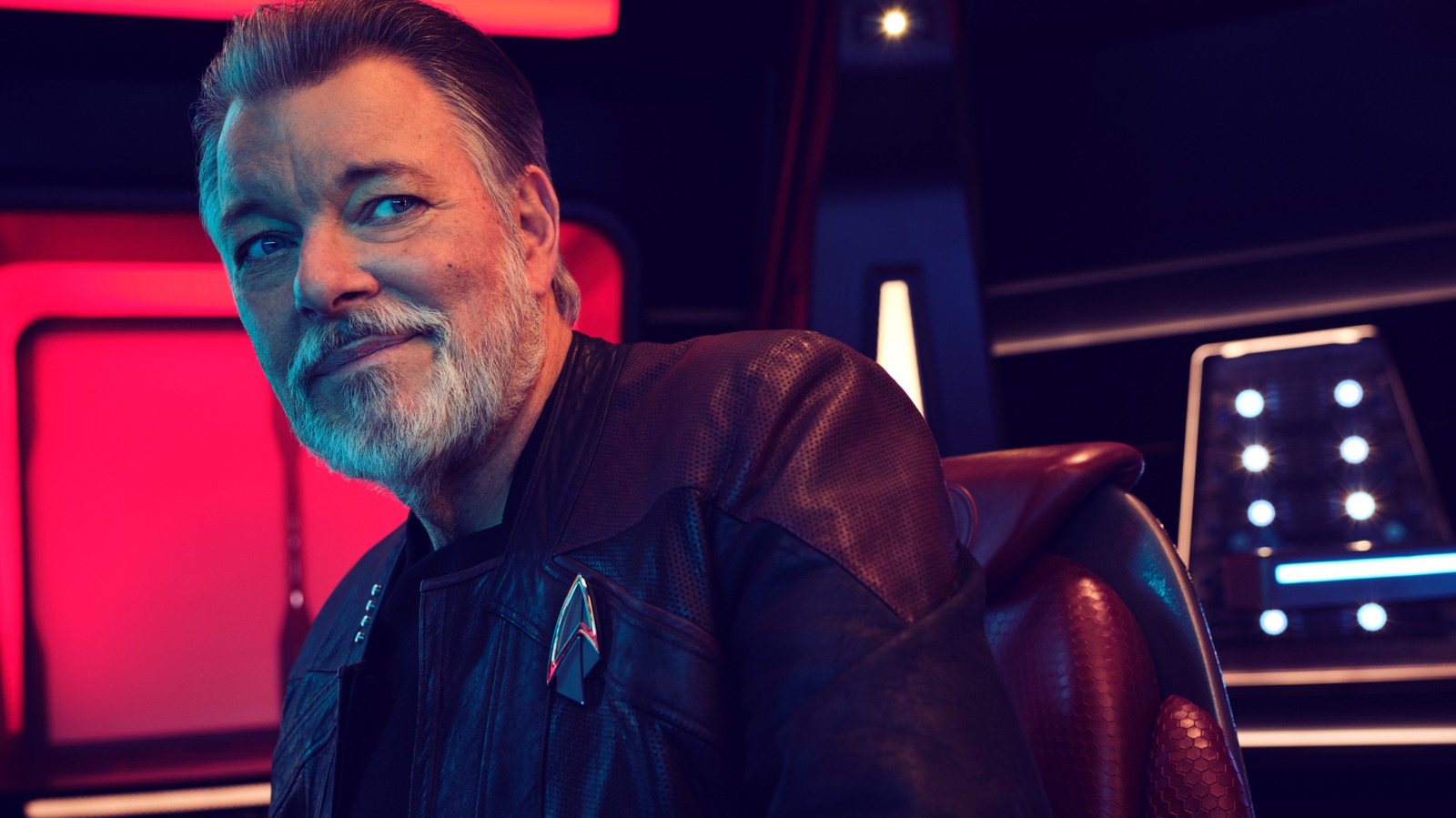
by admin | Jul 16, 2025 | TV & Beyond Articles
the animated (and now-canceled) “Lower Decks” or the melodramatic future of “Discovery,” there’s always a chance that the cast and crew may bump shoulders with some of the most indelible aspects of franchise lore. Typically, that comes in the form of literally intersecting with the biggest and best storylines known to Trekkies. Other times, however, it’s about coming face to face with living and breathing legends — and not necessarily on the side of the camera that you’d expect. “Strange New Worlds” obviously lives up to its billing as a prequel show to “The Original Series,” charting the five-year mission that the members of the USS Enterprise undertook before a certain James Tiberius Kirk took the reins. But it also has a secret weapon up its sleeve in the form of director Jonathan Frakes.
The actor most well-known for playing the indomitable William Riker has continued his love affair with “Trek” through his directing career over the last several years. But beyond merely acting as a walking encyclopedia of his experiences on the sets of “The Next Generation,” the various movies, and “Picard,” he also brings a wealth of knowledge and insights into the modern “Trek” productions that followed in their wake. Take “Strange New Worlds,” for example. Frakes previously directed the “Lower Decks” crossover episode “Those Old Scientists” in season 2, and he returns once again for the upcoming third season. As it so happens, he dispensed some invaluable advice that went a long way towards defining the relationship between two of the most important characters in the show: Rebecca Romijn’s Una Chin-Riley and Captain Christopher Pike (Anson Mount).
As it turns out, Frakes had one recurring mantra prepared for the two stars before filming any scene they were in together … and it’s not great news for all the shippers out there.
Sorry, shippers, but Jonathan Frakes believes Pike and Number One are nothing more than ‘old friends’
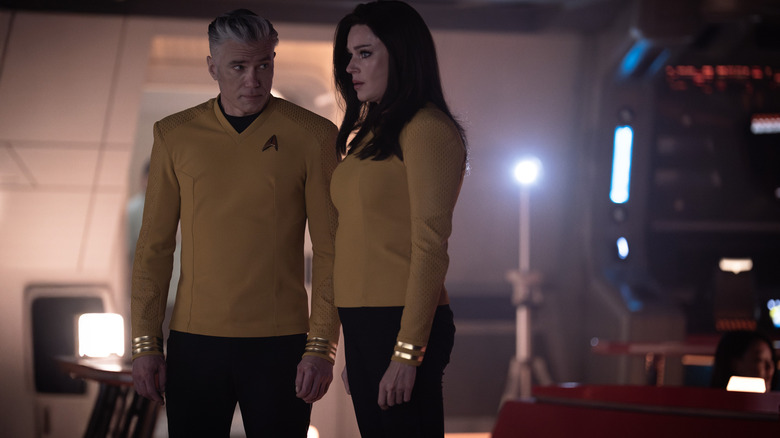
Marni Grossman/Paramount+
For as much as “Strange New Worlds” lends itself to every possible combination of romantic pairings under the sun, some simply aren’t meant to be. (That’s what fanfic is for, folks!) We’ve seen Spock (Ethan Peck) and Christine Chapel (Jess Bush) come together and subsequently drift apart throughout season 2, for instance. But it’s fair to say there are a number of surprising entanglements to come in season 3 (which /Film’s Jacob Hall reviewed here). One of those likely won’t be Captain Pike and Number One, however — at least, that’s according to how Jonathan Frakes directed actors Anson Mount and Rebecca Romijn on the set of the series.
Romijn revealed this tidbit during a recent roundtable interview, which /Film attended. When asked about how she views Number One’s dynamic with Pike, whether it be professional or platonic or something else altogether, the actor responded very thoughtfully:
“Never romantic. I would say very good old, old friends. We imagine — and we don’t know, because it’s never been fleshed out for us — so we’ve decided, between the two of us, that we were probably at Starfleet Academy together and knew each other since way back when, and have always admired each other and trust each other deeply. I would say very good, good friends. Old friends. In fact, every time Jonathan Frakes comes to direct, whenever we have a Pike/Una scene, every time he starts every scene he goes, ‘Olddddd friends.’ He always starts with that. Every scene.”
The ability to quickly settle on a tone and establish the motivations for characters during a particular scene is a crucial one for directors to master, and it sounds like Frakes has this down to a science. That specific piece of direction certainly bears out in every interaction that Pike and Una share, allowing the two to serve as a sounding board for each other in a way that no other member of the USS Enterprise can — even Pike’s own love interest, Captain Marie Batel (Melanie Scrofano). For our money, Frakes has correctly intuited the unique chemistry the two actors share. For viewers who disagree, well, there’s always Archive of Our Own.
“Strange New Worlds” season 3 premieres on Paramount+ July 17, 2025.
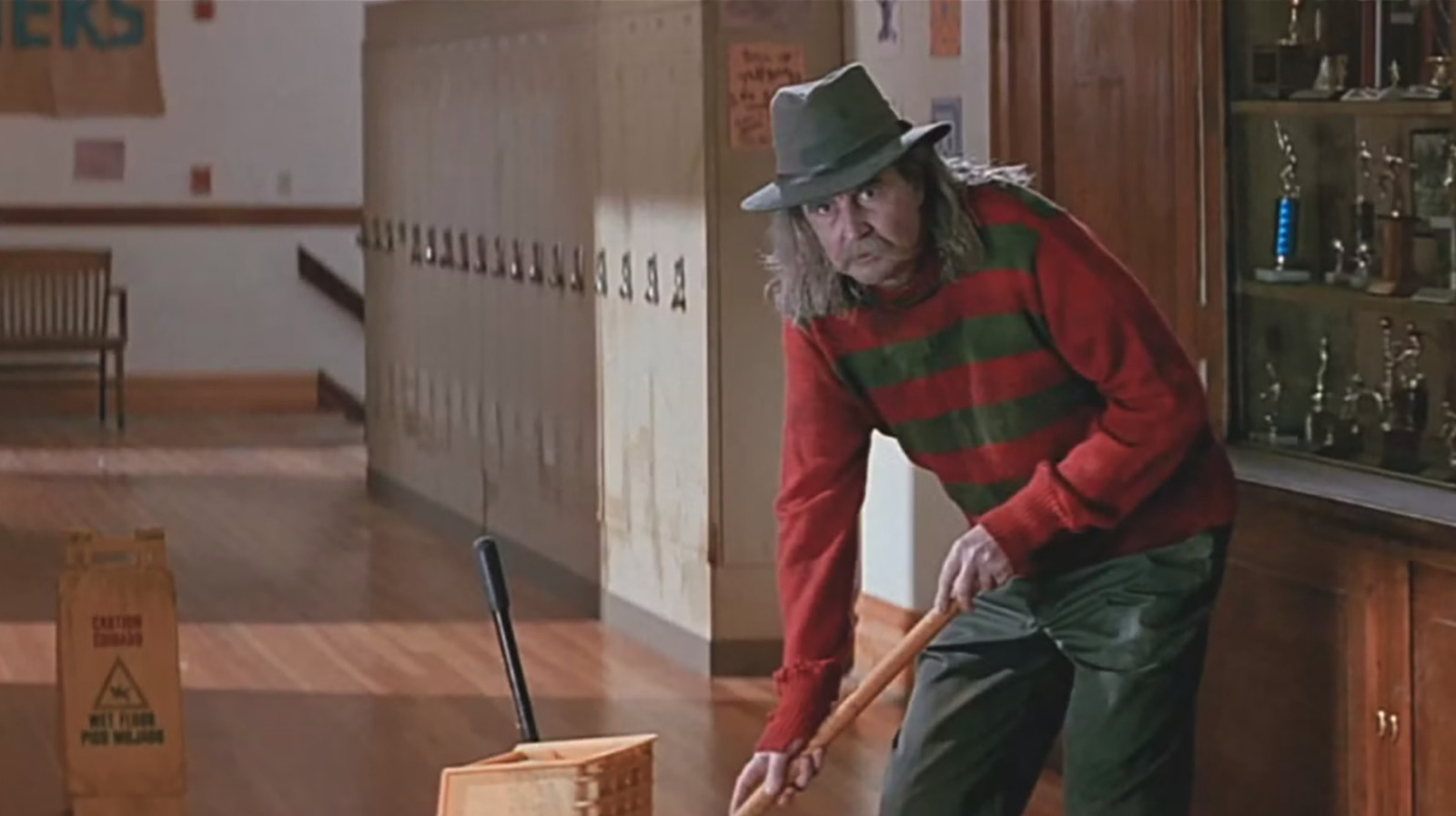
by admin | Jul 16, 2025 | TV & Beyond Articles
played by the Fonz?” to notice either of those two winks to the audience on first viewing.
What made Craven’s surprise appearance in a Krueger outfit extra amusing was that Craven himself was the guy who came up with the iconic villain. Craven wrote and directed the first “A Nightmare on Elm Street.” The next five movies had different directors (with Craven contributing to the third film’s screenplay) before Craven returned to the franchise with 1994’s “Wes Craven’s New Nightmare,” a non-canonical Freddy Krueger story.
Craven only directing the first “A Nightmare on Elm Street” film adds an extra layer of meta humor not just to the janitor scene but to the movie’s opening. There, Casey (Drew Barrymore) is flirting with her soon-to-be killer over scary movies. Ghostface says he liked “A Nightmare on Elm Street” because it was scary, and Casey responds, “The first one was, the rest sucked.” It’s a fun meta moment of Wes Craven flexing. He wrote and directed the most renowned entry in the “Elm Street” franchise, and he knew it.
To put such a line at the very beginning of his film felt like Craven telling his viewers, “Remember when I created an original horror movie so good it spawned a massive franchise? Want to see me do it again?”
Wes Craven also appeared ‘Scream 2’ and ‘Scream 3’
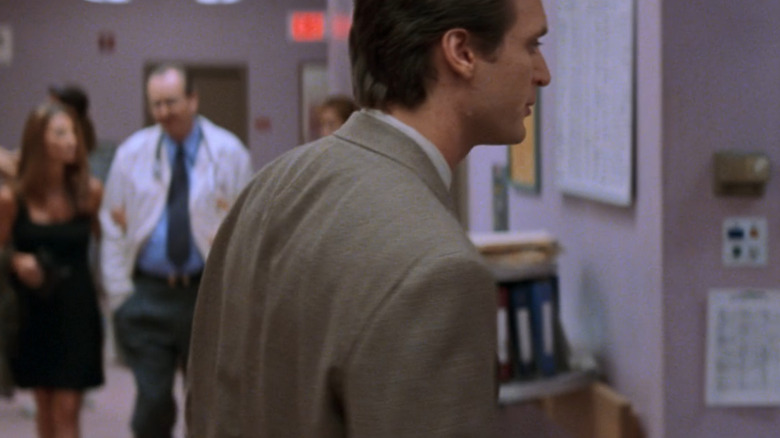
Dimension Films
Although Craven’s cameo in “Scream” is the one everyone remembers, he also pops up in a few of the sequels. In “Scream 2,” he shows up as a doctor in the background during the scene where Derek’s in the hospital. In “Scream 3,” he shows up as an apparent tourist in the background during that cameo from Jay and Silent Bob. It’s especially easy to miss this cameo because there are two far weirder cameos standing right in front of him:
[embedded content]
There was supposed to be another Craven cameo in “Scream 4,” but the scene was cut from the theatrical release. The clip of him was made available in the Scream 4 DVD, however, and it showed him in the background during a scene where Dewey, Jud,y and the rest of the Woodsboro police are studying the aftermath of the opening kill. It’s a shame the scene was deleted; not only would it have helped to establish a more serious tone going into the movie, but it would’ve helped “Scream 4” feel like more of a proper entry in the franchise. There are some “Scream” purists out there who only respect the first three movies (the original trilogy), and an on-screen appearance from Craven might’ve helped add some extra legitimacy to “Scream 4.”
Craven passed away in 2015, so not only did he not cameo in the fifth “Scream” film, but he’ll never appear in one again. (Well, unless the franchise starts sleazily dabbling with CGI resurrections, which we wouldn’t put past it at this point.) Still, we’ll always have those first three “Scream” cameos to look back on. That first cameo, especially, was cool enough to keep us satisfied.

by admin | Jul 16, 2025 | TV & Beyond Articles
talks of an “Ally McBeal” revival starring Flockhart, though no firm plans have been announced as of writing.
Boston Legal
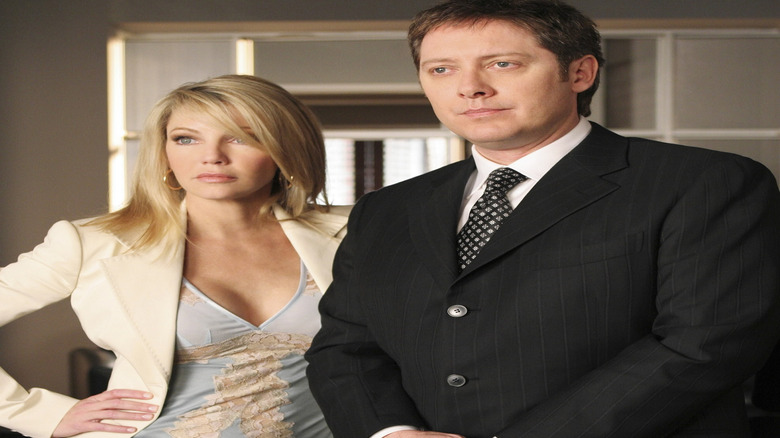
ABC
If “Ally McBeal” is too wacky to satisfy what you’re looking for after finishing “The Lincoln Lawyer,” “Boston Legal” has a better case to offer. Also created by David E. Kelley (and spinning off from another series we were honor-bound to include on this list), it stars William Shatner — doing some of his best work outside of “Star Trek” — and James Spader as aggressive, white glove lawyers who somehow manage to win the most unwinnable of cases despite often behaving like the most unprofessional of professional litigators.
“Boston Legal” still consistently leans into straight-up comedy in every episode, almost bordering on parody at times. But Spader in particular manages the tone of the show as Alan Shore, defining the sarcastic but dangerously intelligent sort of character he has played time and time again in the decades since. Even when Shatner’s near-senile Denny Crane goes to outrageous extremes, Spader’s grounded, occasionally megalomaniacal performance works as a glue that makes “Boston Legal” both surprisingly plausible and highly amusing.
Better Call Saul
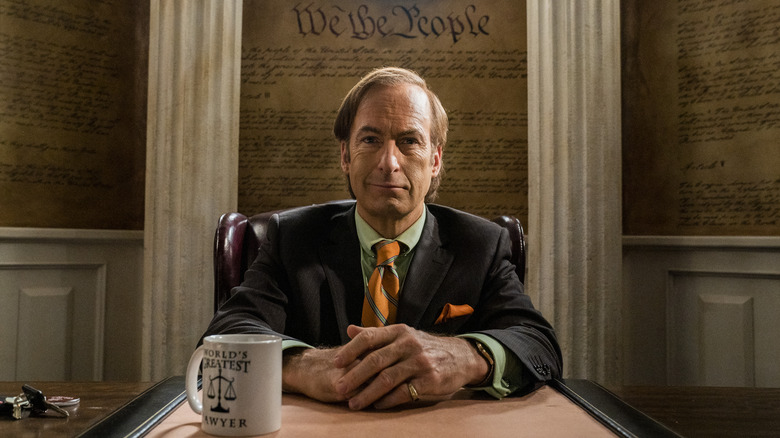
AMC
We’d be shocked if we were the first site to recommend “Better Call Saul” to you. The “Breaking Bad” spin-off series was somehow met with even more enthusiastic acclaim than its predecessor, earning countless glowing reviews across all six of its seasons, as well as more Primetime Emmy Nominations than we could hope to list in a single article.
But while the reputation of “Better Call Saul” may speak for itself in terms of quality, fans of legal dramas like “The Lincoln Lawyer” may be intrigued to learn that the series trades the drug-dealing protagonists of “Breaking Bad” for struggling up-and-coming lawyer Jimmy McGill, who will, of course, one day be known as the “criminal” attorney Saul Goodman (Bob Odenkirk).
Taking place several years before Walter White started his meth lab, it follows Jimmy as he attempts to start his own law practice despite his appetite for getting involved with get-rich-quick schemes. His journey from public defender to fugitive is one of the most richly compelling character studies ever put on television, and “Lincoln Lawyer” fans will be amused by the bizarre cases Jimmy takes on, as well as the extra-legal ways with which he handles them.
Daredevil

Netflix
At first glance, including “Daredevil” on this list — ostensibly a run-of-the-mill superhero show, produced by Marvel Studios no less — might seem like so much of a stretch on our part that we could join the Fantastic Four. Those who have seen the Netflix series themselves, however, know that fans of “The Lincoln Lawyer” would hardly be disappointed by the series’ blend of action, thrills, and genuine legal intrigue.
Like many popular legal dramas, “Daredevil” is the story of an attorney with a moral code so strong that it sometimes defies the rigid system in which he operates. Thus, he uses his unique set of skills to see justice done on his own terms. In this case, rather than using a photographic memory to cheat his way into a law firm or carrying out elaborate schemes and scams to save his clients, Daredevil just so happens to use nigh-supernatural fighting abilities to beat the powerful villains of Hell’s Kitchen into submission.
The balance between Matt Murdock’s (Charlie Cox) nightly activities and his day job in court is fairly equal, with his cases directly tying into his superhero missions and vice versa. The Netflix series has more in common with “The Lincoln Lawyer” than it does most of Marvel’s television shows, and the performances from Cox, Deborah Ann Woll, Vincent D’Onofrio, and the rest of the cast create the dramatic gravitas that keeps legal dramas exciting to watch.
Damages
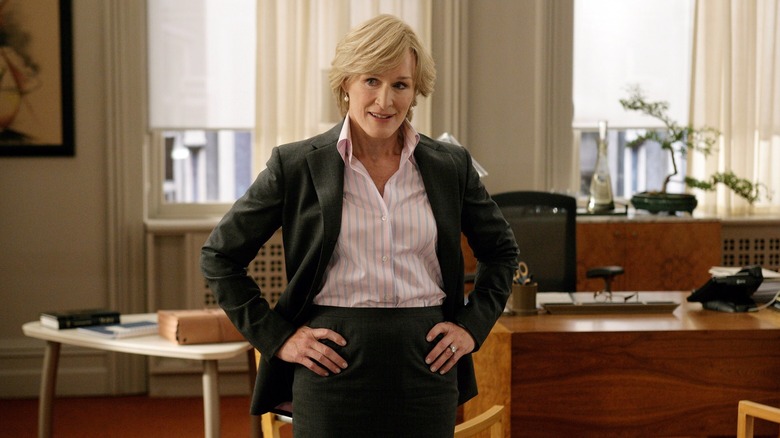
FX
A large part of what makes “The Lincoln Lawyer” so striking in its first season is how vividly it renders its blend of legal drama and thriller, creating a genuine sense of danger and tension for its cast of characters. This is the key trait it shares with “Damages,” an FX series that is quietly one of the best-written television shows of the 2000s.
Rose Byrne and Glenn Close star, captivating audiences as promising young attorney Ellen Parsons and her infamously vicious and unyielding boss Patty Hewes. The first season picks up shortly after Ellen is offered a position at Patty’s firm, a seeming dream job that could set her career up for decades of success — if she can survive Patty’s violent outbursts, impossible standards, and willingness to bend the law to her whim.
“Damages” has a seasonal structure, with each season focusing on a new case or client retained by the firm (which allows the series to delve deeper into the finer aspects of arguing a case). At the same time, a surprising, twist-filled overarching storyline runs throughout the series, containing elements of mystery, suspense, and crime.
Elsbeth

CBS
We should state up front that “Elsbeth” is not a conventional legal drama. Though it was spun off from one of the most popular TV legal dramas ever produced and even follows the casework of a defense attorney, it plays out far differently than you’d expect episode to episode. And yet, that might make it a perfect follow-up for someone recently finished with “The Lincoln Lawyer.”
Carrie Preston stars as the titular character Elsbeth Tascioni, an attorney who is a bit like a cross between Kimmy Schmidt and Columbo. Having been moved from Chicago to New York by the U.S. Justice Department (charged with the lofty task of ensuring that the NYPD is operating within the bounds of the law), Elsbeth is utterly enchanted by her new surroundings, and finds her outsider’s perspective gives her an edge when it comes to solving murders.
Then again, the audience has the greatest edge of all, as the structure of “Elsbeth” reveals the identity of the murderer early in each episode. This places the narrative emphasis on her ability to catch these criminals, as well as the unfolding psychological drama of why they turned to crime in the first place.
Extraordinary Attorney Woo

ENA
Goliath
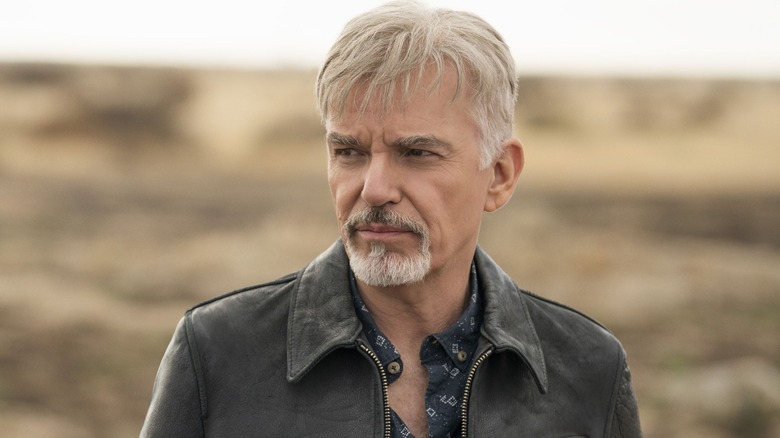
Amazon Prime Video
In contrast, if you’re looking for a show that’s as close to “The Lincoln Lawyer” as possible (so close in fact that they could almost be the same series) your best bet by far is the Amazon Prime Video series “Goliath.” Yet another legal drama created by David E. Kelley, “Goliath” (with Jonathan Shapiro) also tells the story of a once great lawyer cast outside his world by tragedy, heartbreak, and personal vices.
Billy Bob Thornton’s Billy McBride is every bit the tragic hero Mickey Haller is. Like Mickey, Billy suffers from a substance abuse disorder that haunts his otherwise enviable reputation; he, too, lost his wife (played by Maria Bello) as his life spun out of control — and the two come into conflict with one another personally and professionally, as she still works for the powerful law firm Billy left; and he even lives in a motel, which feels spiritually identical to Mickey running his practice out of a car. “Goliath” is at least significantly darker in tone, however, exploring the mental toll the fight against corruption can take on someone so vulnerable.
The Good Wife
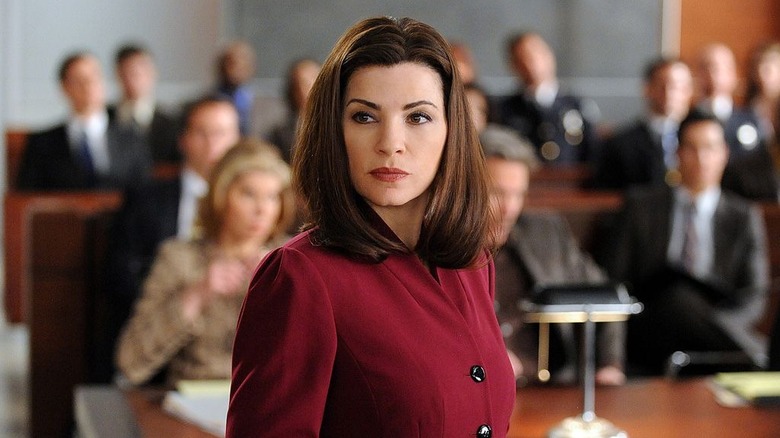
CBS
Arguably one of, if not the most successful legal drama of the past two decades, “The Good Wife” emerged as a tentpole series for CBS when it began airing in 2009. Creators Robert and Michele King surely had high hopes for the series, but it’s unlikely anyone expected it to become a franchise-launching megahit that continues to this day through “Elsbeth.”
“The Good Wife” begins with the shocking revelation that a high-profile Chicago state attorney (Chris Noth) has not only been forced to resign due to a salacious sex scandal, but has been sentenced to a decade behind bars on charges of bribery and corruption. As a result, his wife, ex-attorney Alicia Florrick (Julianna Margulies), must come out of retirement to forge a life of her own. It’s a remarkably sharp story about redemption and resilience, bolstered by a stacked cast that includes Christine Baranski, Alan Cumming, and (eventually) Jeffrey Dean Morgan.
How to Get Away with Murder

ABC
At the start of her infamously ruthless Criminal Law 101 class, college professor Annalise Keating (Viola Davis) introduces her course under a rather… creative title: “How to Get Away with Murder.” As her students compete with one another for a coveted internship within her prestigious criminal defense practice, she promises to teach equally creative ways to protect their future clients from, in many cases, facing the legal consequences of their actions. Yes, even if those actions include murder.
Unfortunately for the students “lucky” enough to be chosen for her internship, classwork becomes more practical than they’d hope. In addition to proving themselves in Keating’s real cases, they also have to work together to cover up a murder they all played a role in. “How to Get Away with Murder” is anchored by Davis as Keating, who very much deserves the massive career resurgence the series brought about for her almost immediately after it began. In terms of plot (specifically with regard to legal credulity) sticklers for the law may find some of its conclusions hard to swallow. This is, after all, another masterpiece from television legend Shonda Rhimes, whose work proudly trades conventional logic for salacious surprises and shocking resolutions. But though it often gets lost between the “Scandal” and “Grey’s Anatomy” of it all, “How to Get Away with Murder” is undoubtedly one of her best series of all time.
Matlock (2024)
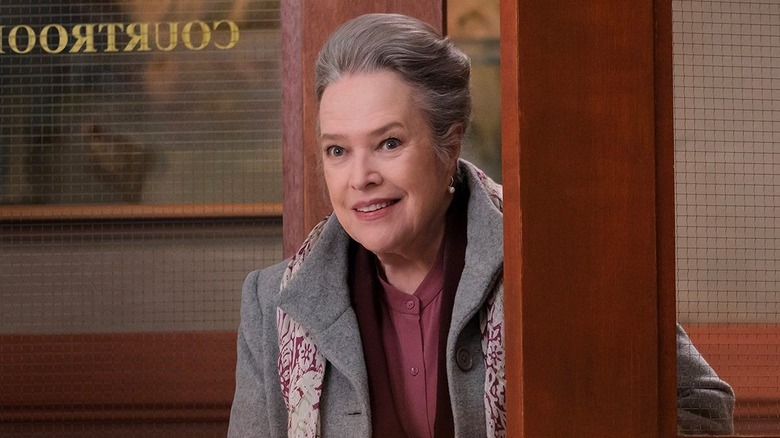
CBS
Like many of the protagonists of the legal dramas featured on this list, Mickey Haller’s personal failings, insecurities, and unconventional background are ultimately what make him a singularly effective attorney on “The Lincoln Lawyer.” The same is especially true for “Matlock,” a new series that began airing on CBS in 2024 to rave reviews — and is not, in fact, a reboot of the 1986 Andy Griffith TV series (though the identical names are both confusing and intentional).
A hefty amount of the show’s charm comes from its perfectly written and cast ensemble of characters, many of whom you’ll recognize from popular films and television shows from the last several years. Kathy Bates leads, returning to the small screen as Madeline Matlock, an attorney coming back to the profession after over 30 years on the outside. The precise reasons for her coming out of retirement are arguably a spoiler for the series, but part of it was due to her age. As an older woman, Matlock has noticed that no one really seems to notice her anymore, which gives her an unexpected edge in the courtroom and a determination to advocate for those similarly brushed aside by society.
Perry Mason (2020)
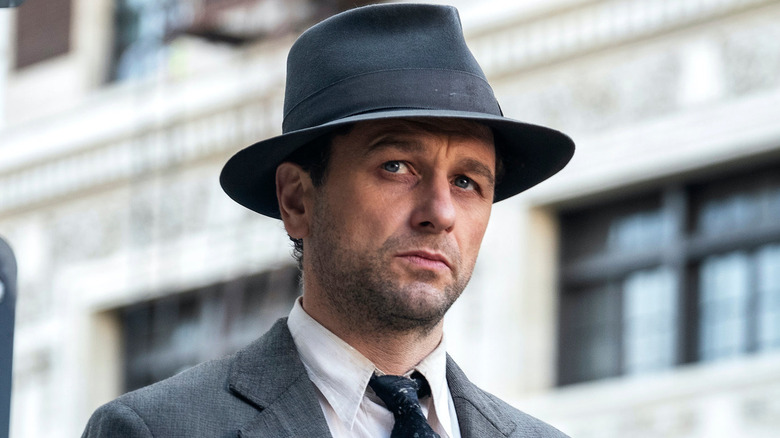
HBO
After wrapping up his time in the Marvel Cinematic Universe, Robert Downey Jr. set his sights on television production — his first major project was a prestige TV reboot of “Perry Mason.” However, after scheduling conflicts arose, Matthew Rhys of “The Americans” took the reins of the iconic titular role, leading a story that takes place during the early 1930s at the beginning of Mason’s career as a crime fighter.
It isn’t a traditional legal drama, with Mason beginning the series as a private investigator hired to look into a horrific crime involving the kidnapping of an infant (of all the series on this list “Perry Mason” also happens to be the bleakest). The slow burn of the mystery is still there, however, and readers looking for something with greater narrative heft, a character-driven story, and a more distinct visual style will be among the most satisfied. Despite being cancelled before its third season, “Perry Mason” still feels whole and worthwhile.
The Practice
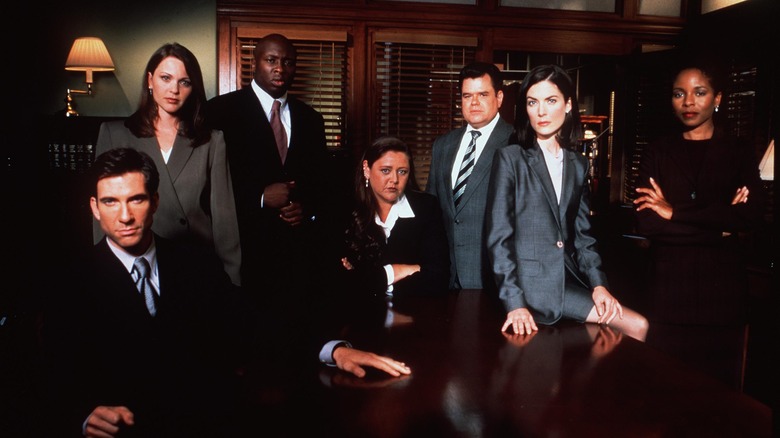
Getty Images/Getty Images
Without the success of “The Practice,” we probably wouldn’t have “Ally McBeal,” “Boston Legal,” “Goliath,” “The Lincoln Lawyer,” or more than half the legal dramas on this list.
Having previously worked as an executive producer and writer on the drama “L.A. Law” at ABC, David E. Kelley returned to the network in 1996 to take his a swing at creating a courtroom drama of his own. Refining the sharp wit and strong character-writing of the procedural drama “Chicago Hope,” “The Practice” was an explosive hit for both Kelley and the network that ran for eight seasons, over 160 episodes, and spawned the spin-off series “Boston Legal.”
Fans of “The Lincoln Lawyer” may find it a bit outdated in terms of style, but narratively speaking, “The Practice” is still as sharp a series as they come. This is largely thanks to Dylan McDermott’s Bobby Donnell, whose ethical struggle with the law raises questions about the system that remain relevant today.
Shark
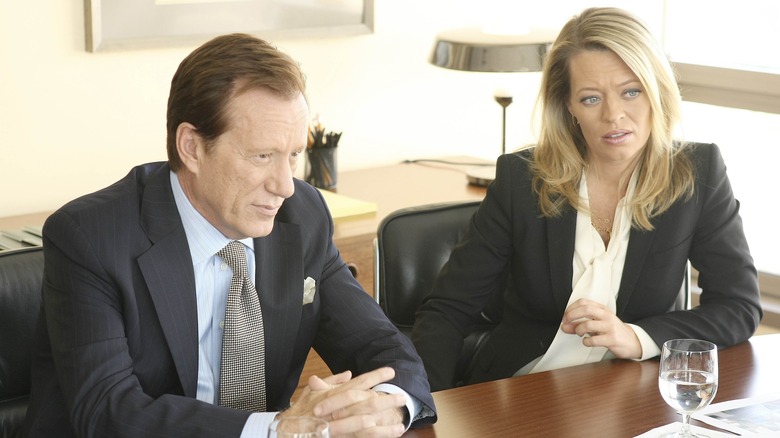
CBS
Speaking of ethical dilemmas relating to the law, the entire plot of “Shark” is kicked off by the title character’s revelation that, in some cases, the best defense can lead to the worst outcomes for society. It stars James Woods (formerly best known for voicing Hades in Disney’s “Hercules;” currently best known for voicing the most unhinged opinions on social media), whose performance as the hilariously named Sebastian Shark contains an undeniably peerless balance of smarmy sleaze and humanity.
The series follows Shark after he leaves behind his career as a defense attorney to become a prosecutor for the district attorney’s office, hoping to redeem himself by working on the side of “justice.” It’s a compelling and potentially complicated premise that admittedly isn’t fully taken advantage of here. Still, “Shark” contains enough moments of genuine thematic ingenuity to be thought-provoking — and with Woods bearing his teeth in every scene he chews, it’s a show worth swimming with the fishes for — if only for a few episodes.
Suits

USA
We don’t need to review any further evidence. It’s simply a fact that, if you like “The Lincoln Lawyer,” you’ll be completely enthralled by “Suits.” There’s a next-to-zero chance that anyone reading this looking for recommendations hasn’t heard of the massively popular USA legal dramedy series, which ran for nine mostly great seasons from 2011 to 2019 before receiving an unexpected cultural resurgence in the early 2020s (said resurgence was so strong that NBC greenlit the short-lived Stephen Amell reboot “Suits L.A.” — which was, somewhat expectedly, unsuccessful without any of the original cast returning in leading roles).
If you’re somehow here and unaware of “Suits” (remember: perjury is a prosecutable offense, we think, maybe), the series follows the unlikely partnership and friendship between ambitious and morally dubious corporate attorney Harvey Specter (Gabriel Macht) and Mike Ross (Patrick J. Adams), his green but brilliant associate whom he takes a major gamble on. Despite being a proven legal genius via his photographic memory and full-time side-gig helping rich kids pass the bar exam, Mike doesn’t have a law degree. In fact, he doesn’t have any degree whatsoever. “Suits” has everything “The Lincoln Lawyer” has but doubled, including a dual dose of charismatic underdogs talking their way to victory after victory. And, fortunately, both series are currently streaming on Netflix.
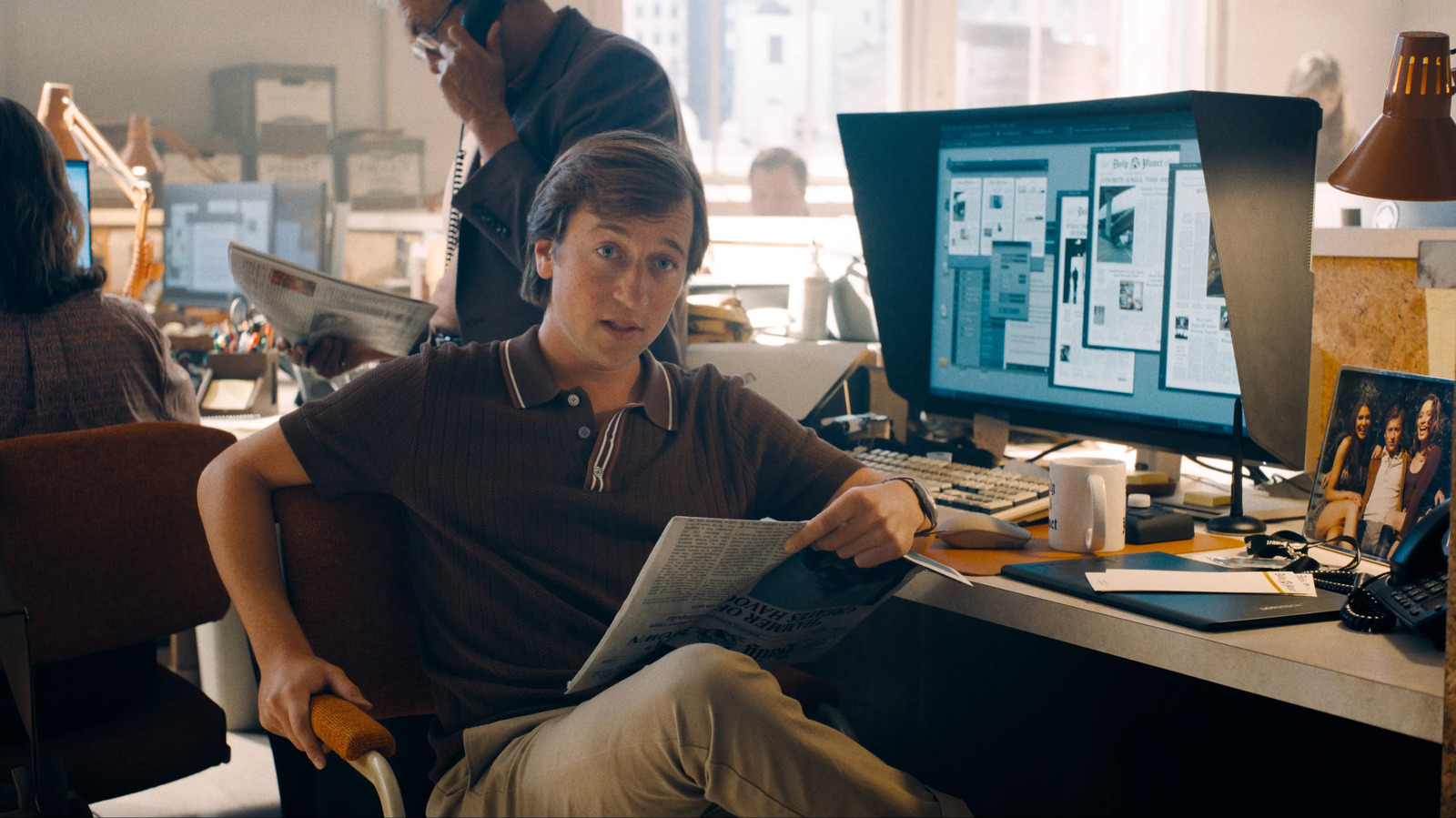
by admin | Jul 16, 2025 | TV & Beyond Articles
Skyler Gisondo plays Jimmy Olsen, a junior reporter at the Daily Planet, and one of Clark Kent’s charismatic co-workers. Jimmy is dazzlingly handsome and is depicted as the office stud, often drawing giggly, flirtatious looks from the women he works with. Gisondo plays Jimmy as a little clueless and certainly lacking guile. Jimmy also has a contact inside Lex Luthor’s minions. It seems Lex (Nicholas Hoult) is now dating Eve Techmacher (Sara Simpaio), one of Jimmy’s ex-flings. Eve wants to reconnect with Jimmy, and feeds him information in hopes that she’ll get a date out of it. Jimmy rebuffs her advances, a little overwhelmed by her outsize personality.
Jimmy Olsen is a long-standing supporting player within Superman lore, and he has shown up in just about every TV and film version of “Superman” to have come out in the last eight decades. Marc McClure played Jimmy in Richard Donner’s 1978 “Superman,” and was the only common actor between that film and 1984’s “Supergirl.” Michael Cassidy played the character in “Batman v Superman: Dawn of Justice.” Back in the 1950s, Jimmy even starred in his own comic book called “Superman’s Pal, Jimmy Olsen,” a surreal title that often saw Jimmy embroiled in sitcom shenanigans; one time, Jimmy almost married an ape!
The new “Superman” film has been a hit, and sequels are inevitable. This means that Gisondo will have more opportunities to play Jimmy and, it is hoped, expand on his skills and personal adventures. Indeed, Gisondo recently spoke with Variety about playing Jimmy Olsen again, and he declared what he wanted for his character. Notably, he wanted Olsen, a photographer, to spend more time out in the field, proving his journalistic mettle.
Skyler Gisondo wants to see more of Jimmy on the job, and more of Jimmy in love
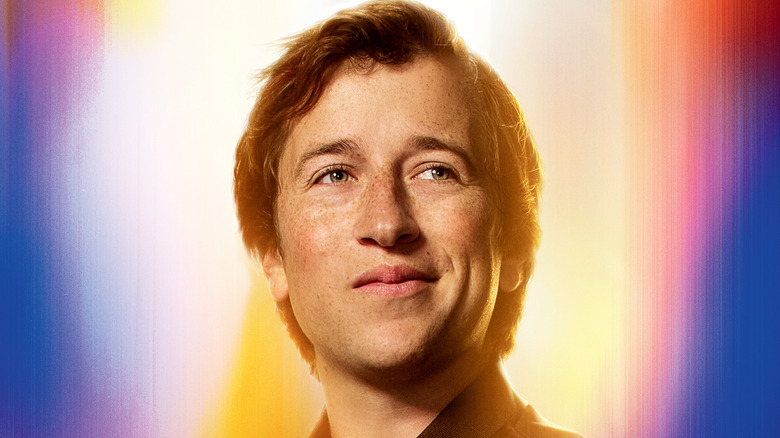
Warner Bros.
Most notably, Gidondo saw Jimmy Olsen as a man infused with professional integrity. Jimmy Olsen is typically seen — across all “Superman” media — in the office. We know he takes his job seriously, even if he is sometimes depicted as a slapstick character. Gisondo wanted to make sure that Jimmy Olsen had further opportunities, in whatever “Superman” sequels may be in the works, to express his own natural integrity. Jimmy is not a liar, a boob, or a trickster. He’s scrupulously honest. Gisondo admired that, saying:
“I would love to see more of Jimmy in the field. I would like to see him really in the thick of things. I would love to see him employ his powers. Clearly, there’s a magnetism to him with women. More than anything in the world, Jimmy really cares about his job, it matters to him a lot, and he has a lot of journalistic integrity. It’s why he’s so pained with Eve — he’s not lying when she’s like, ‘And we’ll spend the weekend together.’ […] He will not lie to get a scoop.”
Eve, it should be noted, does get her wish in James Gunn’s “Superman.” She helps Jimmy, and he agrees, even if it is mildly reluctantly, to spend the weekend with her. Gisondo, however, also wanted to see what happens when a ladies’ man finally finds someone he wants to focus more of his attention on. He wants Jimmy to be made an honest man. Or, as he put it:
“I would love to see Jimmy have to utilize those powers to get entrenched further in a story. I would like to see what it looks like when Jimmy does like somebody, when he does connect with somebody romantically and actually wants to pursue that.”
Which is a sweet thought.
Skyler Gisondo knows that the character is silly, but wants a more serious plot for him
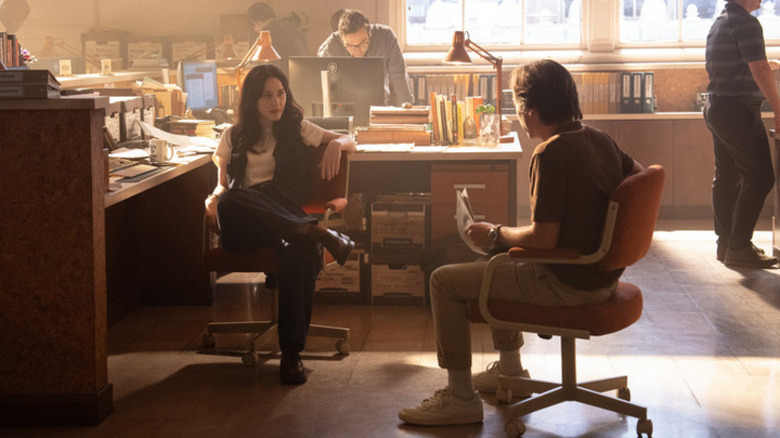
Warner Bros.
Gisondo is fully aware of 1950s-era Jimmy Olsen, and how the character is often depicted as wacky or comedic. Although Gidondo is a talented comedic actor, he doesn’t want the 1950s version of Jimmy to make it to the big screen. If Gisondo sees Jimmy as a journalist above all, and one with a great deal of integrity at that, then he’s going to want that on the big screen before Gunn starts using alien magic to transform him into an animal, or some equally silly thing. As Gisondo put it:
“In the comics, there’s some stuff where Jimmy turns into a turtle. There’s all sorts of deviations. I would love to see Jimmy get over his head in a big way, and maybe even some version of Jimmy where he is grappling with some newfound metahuman powers. But more than anything else, I just want to see Jimmy in a situation where the stakes are very high and he needs to get a story.”
Which was something like what happened in the extant “Superman” movie. It will be Jimmy and Eve who end up breaking a big story that affects the plot of the movie. Gisondo wants more of that, please, only with the stakes raised even higher. And, yes, it would certainly be fun if Jimmy were somehow granted superpowers and temporarily became a vigilante in his own right. But only temporarily. Jimmy is more fun when he’s human.
“Superman” is the first in a planned series of interconnected superhero movies, overseen by Gunn (and his co-producer Peter Safran), and colloquially being referred to as the DCCU (DC Cinematic Universe). No sequels to “Superman” have yet been announced, but you can bet your sweet bippy that we’ll see more, and in due time. Especially after “Superman” made so much money in its opening weekend. Also, Jimmy may even be getting his own TV series, so stand by.








































